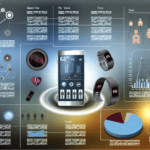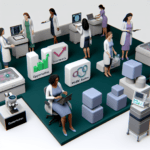Explore the Healthcare Information Systems Market: trends, size, share, and forecasts. Get key insights and data for strategic decisions.
Healthcare Information Systems Market Size, Share, Trends & Forecast

Table of Contents
Healthcare Information Systems Market Size, Share, Trends & Forecast

The healthcare information systems market is a dynamic and rapidly evolving sector, driven by technological advancements, increasing demand for improved healthcare services, and the need for efficient management of healthcare data. This article delves into the current market size, shares, trends, and provides a forecast that highlights the potential growth and developments expected in this field.
Current Market Overview
The global healthcare information systems market has witnessed significant growth over the past decade. This growth is primarily fueled by the increasing adoption of electronic health records (EHRs), rising healthcare expenditures, and the growing need to reduce healthcare costs while improving patient care outcomes.
According to a recent report by Grand View Research, the global healthcare information systems market was valued at approximately USD 96.2 billion in 2021 and is expected to grow at a compound annual growth rate (CAGR) of 7.8% from 2022 to 2030. This growth is indicative of the increasing reliance on digital systems within the healthcare sector.
Key Market Drivers
- Technological Advancements: Innovations such as cloud computing, artificial intelligence (AI), and machine learning (ML) are revolutionizing healthcare information systems.
- Government Initiatives: Numerous governments worldwide are implementing policies and regulations to promote the adoption of healthcare IT solutions.
- Increasing Healthcare Costs: As global healthcare costs rise, there is a pressing need to adopt cost-effective IT solutions to manage expenses effectively.
- Demographic Trends: Aging populations and the prevalence of chronic diseases are prompting healthcare facilities to adopt advanced information systems.
Market Segmentation
The healthcare information systems market can be segmented based on product type, component, deployment, end-user, and region. Each segment provides unique insights into the market dynamics and potential growth opportunities.
- By Product Type: Clinical Information Systems (CIS), Administrative Information Systems (AIS), Electronic Medical Records (EMR), and others.
- By Component: Services, software, and hardware.
- By Deployment: On-premise, cloud-based, and hybrid systems.
- By End-User: Hospitals, diagnostic centers, academic institutions, and others.
Regional Insights
The North American region holds a significant share of the healthcare information systems market, attributed to well-established healthcare infrastructure, high adoption of digital health technologies, and supportive government policies. However, Asia-Pacific is expected to witness the highest growth rate due to increasing healthcare expenditure, rising awareness about the benefits of digital health, and government initiatives promoting healthcare IT in countries like China and India.
Emerging Trends
Several emerging trends are shaping the future of the healthcare information systems market:
- Integration of AI and ML: These technologies are being increasingly integrated into healthcare systems for predictive analytics, disease diagnosis, and personalized treatment plans.
- Telemedicine: The COVID-19 pandemic has significantly boosted the adoption of telemedicine, and this trend is expected to continue, influencing the healthcare information systems market.
- Data Security: With the increasing amount of healthcare data being generated, there is a heightened focus on improving data security measures.
- Interoperability: There is a growing emphasis on the interoperability of healthcare information systems to ensure seamless communication across various healthcare providers and systems.
Case Studies
Several case studies highlight the impact and benefits of advanced healthcare information systems:
- Case Study 1: A major hospital in the United States implemented a fully integrated EHR system, resulting in a 30% reduction in administrative costs and a 20% improvement in patient outcomes.
- Case Study 2: A healthcare facility in Sweden used AI-powered diagnostics to reduce the time for disease diagnosis by 50%, significantly improving patient care efficiency.
Challenges and Barriers
Despite the promising growth, there are several challenges that the market faces:
- High Costs: The initial setup and maintenance costs of advanced healthcare information systems can be prohibitively high, especially for small-scale healthcare providers.
- Data Privacy Concerns: With the increasing use of digital systems, data privacy and security concerns are more pronounced.
- Resistance to Change: There is often resistance from healthcare providers in adopting new technologies, which can hinder market growth.
Market Forecast and Future Outlook
Looking ahead, the healthcare information systems market is poised for substantial growth. Innovations in technology, coupled with increasing healthcare demands, are expected to drive the market forward. By 2030, it is anticipated that more healthcare providers will have adopted sophisticated healthcare information systems, leading to more efficient healthcare delivery and improved patient outcomes.
Conclusion
The healthcare information systems market is at a pivotal point, with significant opportunities for growth and innovation. As the sector continues to evolve, stakeholders must navigate challenges and leverage trends to fully capitalize on the potential benefits. The future looks promising, with technology playing an ever-increasing role in transforming healthcare for the better.








